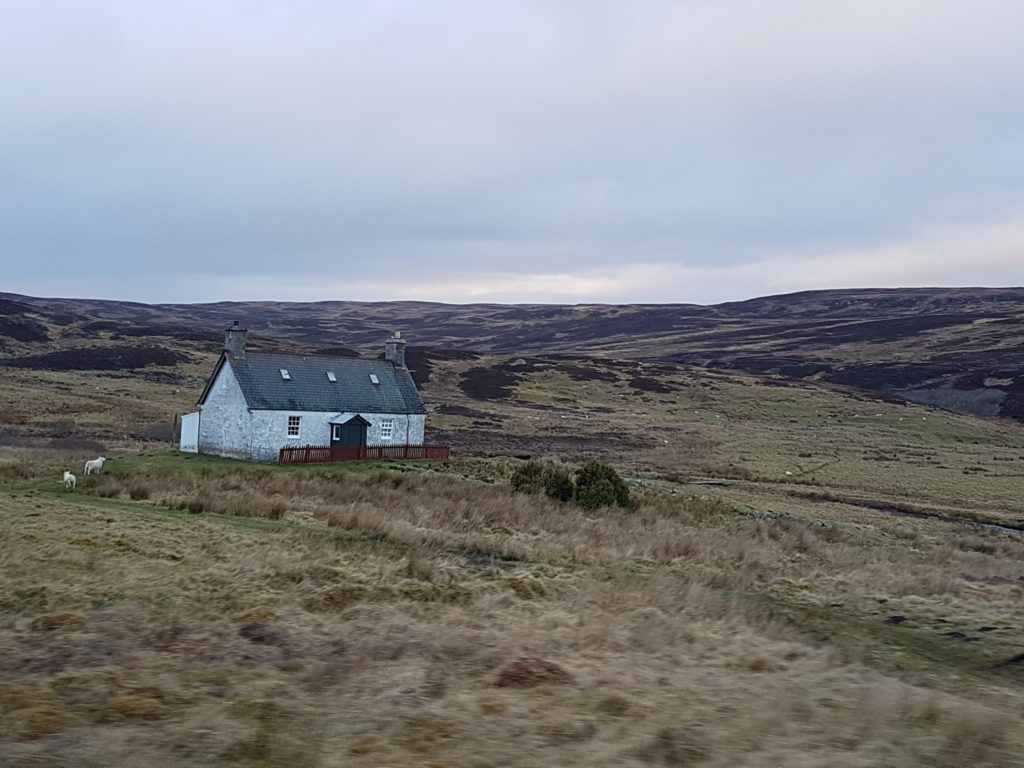A steep hillside opposite my home office is sprouting with young trees.
Bracken race
Fighting to get away from native prehistoric bracken, avoid the odd deer, an experiment is unfolding. Public grant aided, carbon paid-up, charity funded, ‘feel-good‘ rights (listen from 40min) cashed in, volunteers on call all coming together in an innovative project.

Money ladder
Way up in north east Scotland, beyond a tumbling Victorian salmon ladder, nearly 1000ha of woodland is given consent. It took years to come to fruition. Ambitious proposals were thwarted by stakeholder wrangles and application of protective designations. It was a drawn out process, which included a complex Environmental Impact Assessment, including some rather expensive conditions. Namely, to maintain upland open spaces and control foxes to ensure they don’t eat hen harriers (p24). Meanwhile Forestry Scotland seeks to re-frame narratives around sitka spruce and others promote multi-benefit forestry.

Trade-off tree
Lowland farmers are digging deeper into agro-forestry. Some upland farmers are looking at silvopastoral systems – also known as wood pasture. The social aspect as to why some farmers resist trees is unexplored*. As is being more explicit around trade-offs with ground-nesting birds: curlews and lapwings both dislike trees and tall hedgerows.
*2022 update, poorly socially constructed forays by green carbon credit hunters has not helped one bit. Anything but Foresight…

Realistic ambition
Doddington in Northumberland is a fine blueprint project for well-designed, multi-output landscape-scale forestry (350ha). Are we brave enough to try this elsewhere on curlew-free, bracken-infested hillsides? Or are we petrified of not being (or perceived to be) on the ‘right side of history’, even if orchestrated by a campaigner’s arguably unrealistic target.

We do seem rather keen on picking apart tree planting proposals. I visited this potential site (below) on the southern edge of Kielder forest on one of my ‘field intel‘ trips. I then noted this scathing piece published in mainstream media on the same proposal. I wonder if personality clashes, entrenched views, groupthinking, gatekeeping and partisan solidarity skew the ability to even seek ti work through the issues. We neglect the social science at our peril.
“It is not comforting continuity in landscape that connects us most deeply to the rural past, it is distressing change”
A Strange Country Almanac, Dec 2020

Competing narratives
The posting of context-free smartphone pics from roadside or post-felling sites are questioning land management practices. Of course planting on ‘deep’ peat is a no-no. Ground-truth surveys of existing flora and fauna before any tree planting is vital. As are the tough decisions around preempting reactions to shifting landscapes. Listening to local communities, as much as to tree predator management experts. These days it’s best to anticipate that natural regeneration/wilding (insert own word) may offend someone, somewhere.
‘One person’s scrub clearance for butterflies is another’s affront over warbler habitat ecocide’
Probably via twitter
A true thicket of ‘wicked problems‘ no one wants to thin out in the glare of social media, let alone after a wildfire.

Climate crunch
Spot the publication* below which a shadow Defra Minister (p.4) handed me 10 years ago? Perhaps if politicians didn’t shelve stuff not on their watch, they could all have started combating climate change issues earlier rather than later.
This new project (Carbon Community) is looking at the field-scale science of carbon sequestration in trees and soil. Expect more of this. Keep an eye on communities who may not be ‘in the room’, but watch with interest. Best get them in earlier before there’s talk in the local pub.

Un-grant-aid-able joy
My small woodland is nine years on and it’s turning pretty wild. It was from the start. An un-grant-aid-able mix of twenty seven species: home to humans, fungi, badger digging bumblebee nests, chainsaw harvested, ant hill heaven, redstart ready, children’s future woodland.
Here’s what it looks like in June 21.
I still reckon we can do a better job at navigating these knotty issues than what is being ploughed in a circle at the moment.

Pingback – Forest life
